By Dan Weisz
Over the past few weeks I’ve visited four different ponds in the Tucson area. All of them had some very interesting winter visitors who will be leaving us once they decide winter is over and it is time to head north to their breeding grounds. For you Tucsonans, the ponds include those at Columbus Park on Silverbell, Fort Lowell Park on Craycroft, the pond behind the City of Tucson Hardesty Building at Alvernon and 22nd St. adjacent to the Randolph Golf Course, and a lake on private property in the city limits. These pictures show some of the wide diversity of snowbirds we have visiting our town which may be seen in the Foothills at golf courses or neighborhood ponds as well as around the Tucson area.
Ring-Necked Ducks are fairly common throughout southern Arizona in the winter. It is hard to see the chestnut ring around this duck’s collar that gave it its name, but that collar is there and there is a hint of it in the front of its neck. I always see that white ring around its bill and often call it (incorrectly) Ring-billed Duck. There is no such thing.
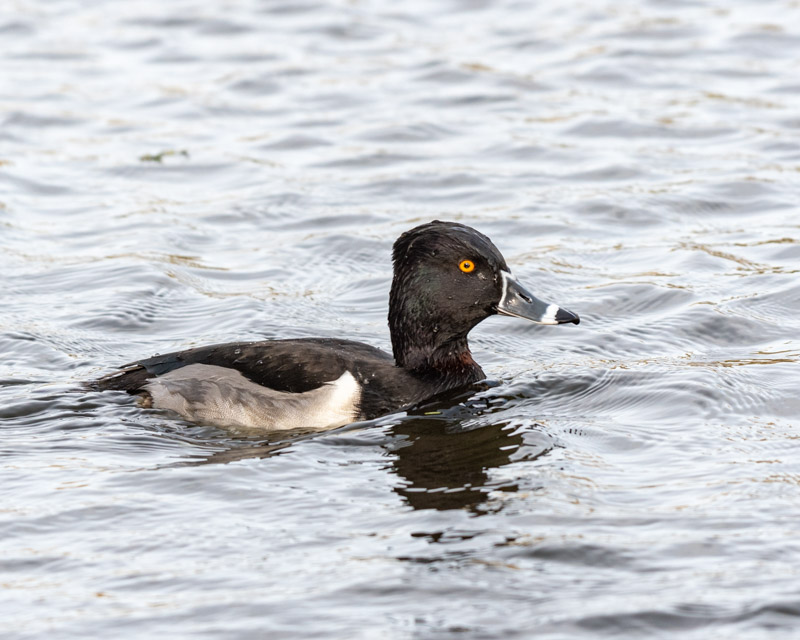
American Wigeons are another very common wintering duck in Tucson. This male is preening- cleaning and putting all of his feathers in place. They make squeaking sounds that are unmistakeable, both in the water and while flying in the air. You can hear them on this Birdnote story: https://www.birdnote.org/show/american-wigeon
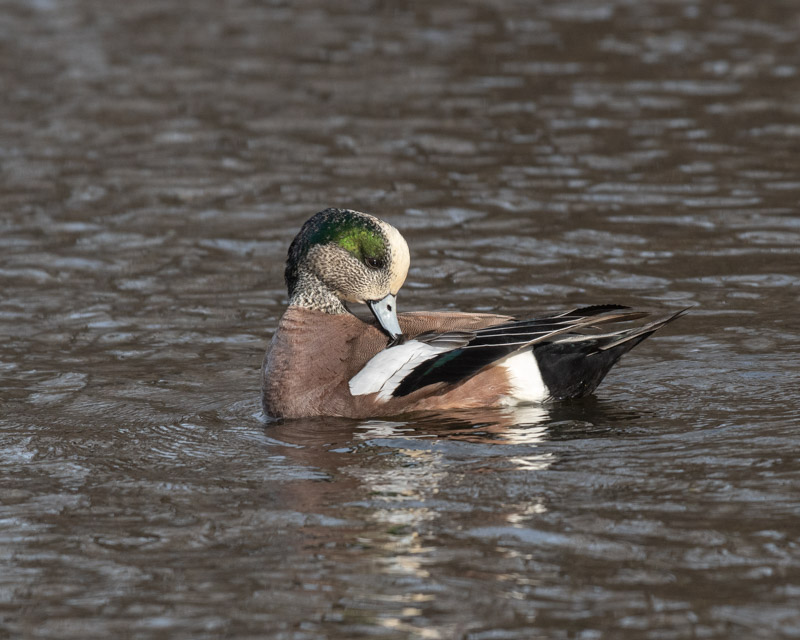
This Western Grebe is spending time at Columbus Park. Western Grebes have a very long, straight bill and a black cap that extends below its red eye. These birds dive underwater for their prey.
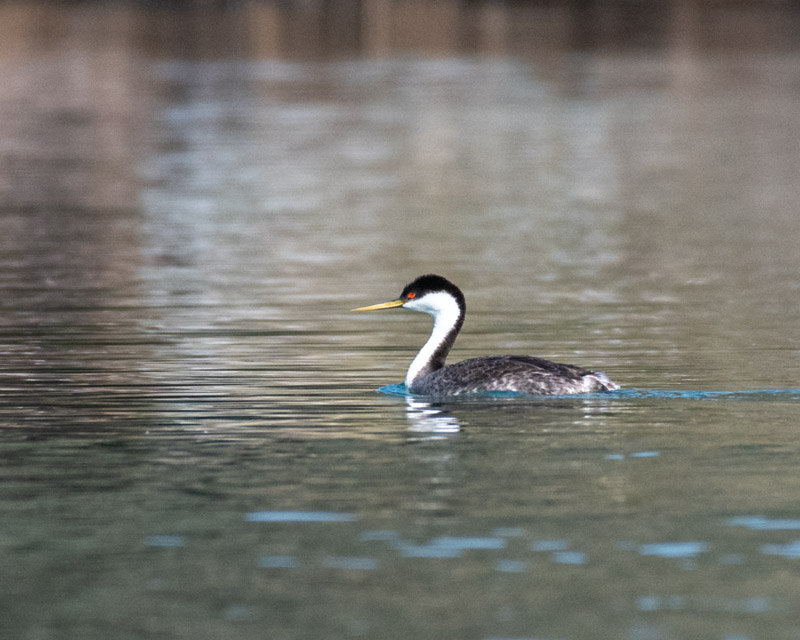
Neotropic Cormorants are uncommon but can be present year-round in Tucson. They often are in groups and will dive for their prey repeatedly. Often Cormorants can be seen out of the water with their wings spread to dry. The Cormorant below caught a fish and then…….
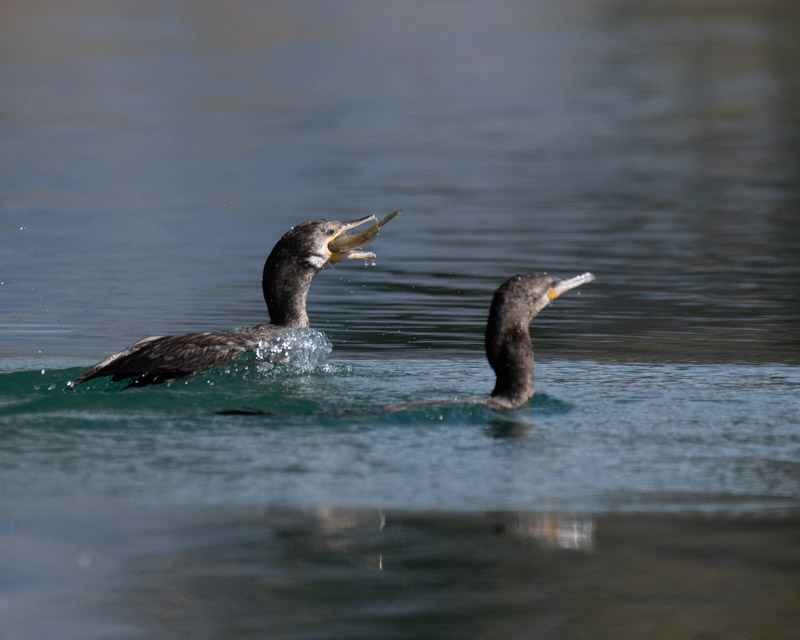
it swam rapidly away from its friends so they wouldn’t be able to steal the fish from it.
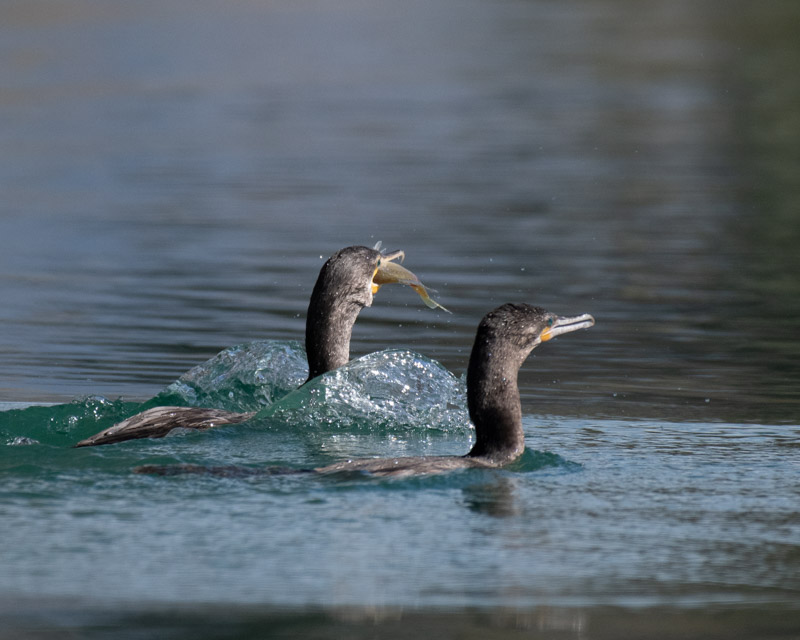
Some Common Goldeneyes showed up at the Hardesty Pond. These birds are very uncommon in Tucson in the winter and this was the first time I had ever seen them. This is a female with her chocolate colored head and that golden eye that gives the species its name. Female Goldeneyes also have an orange tip to their beaks which the males do not have.
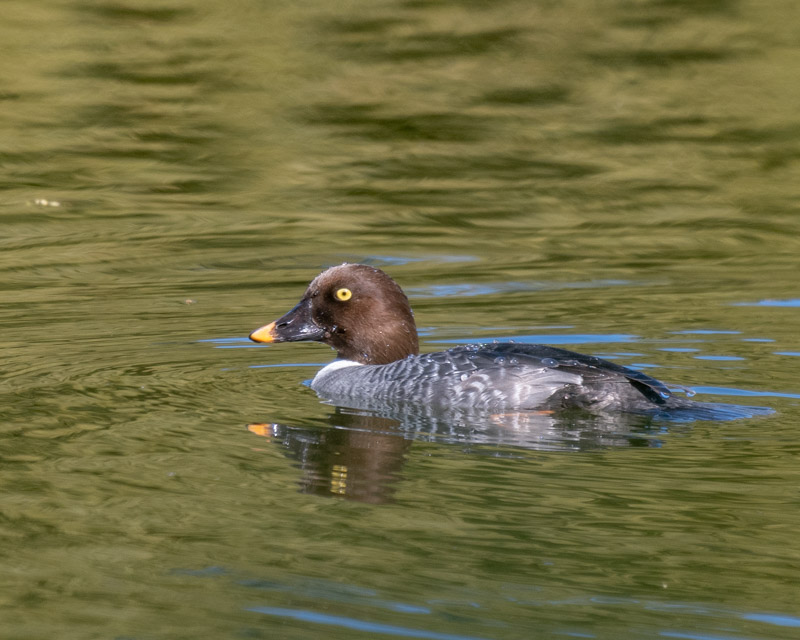
Two male Northern Shovelers were swimming side by side. This species have the most distinctive bill of all of the dabbling ducks. That bill gives the duck its name: Shoveler. Besides the bill, its bold coloring really stands out with that metallic green head and the rusty sides which are set off by its white chest.
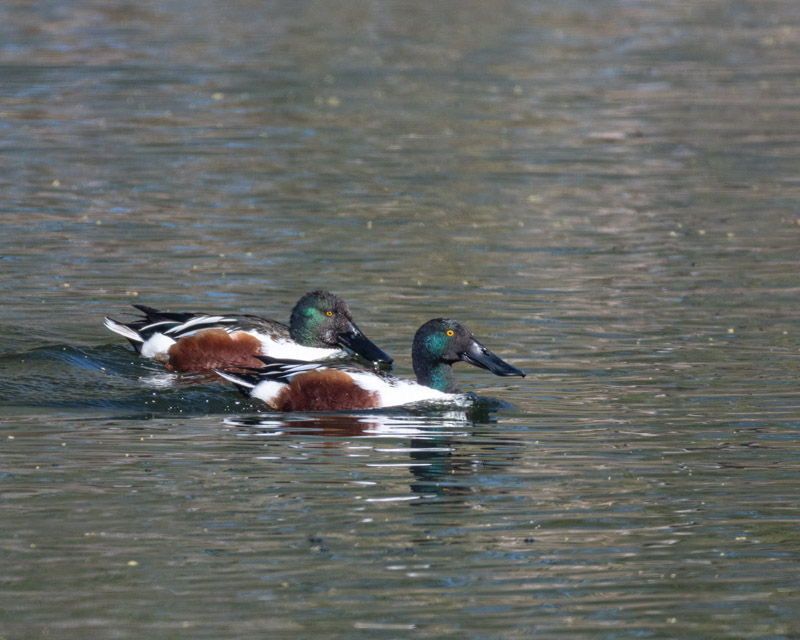
A big highlight for me was being invited to a friend’s neighborhood which has a private pond. There was a group of 22 Common Mergansers in the large pond. Although they are called Common Mergansers, they are definitely not common in Tucson, even in the winter. These streamlined ducks are very striking in their looks.
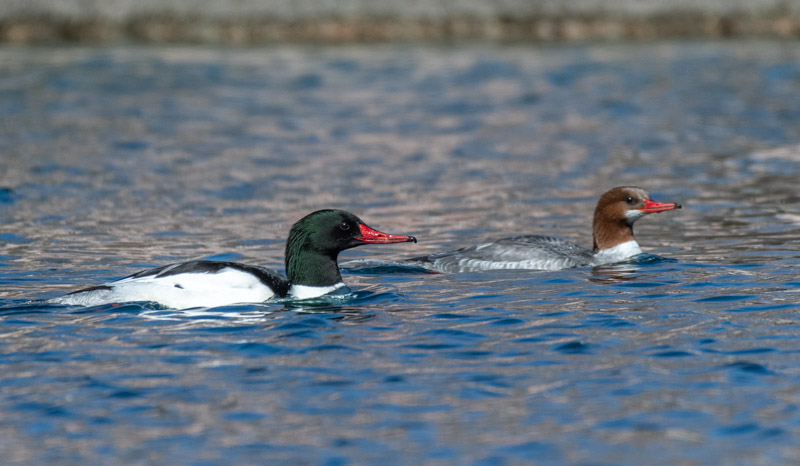
The female Common Mergansers have gray bodies and richly colored cinnamon heads with a short crest. She also has a white chin and long, slender reddish bill with a black tip.
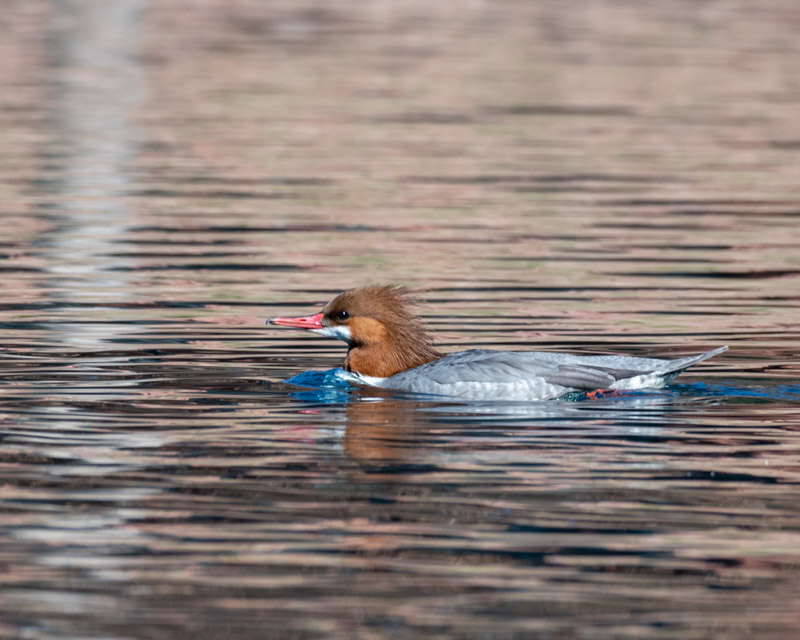
The male Common Merganser is mostly white but with a green head and an orange-red bill.
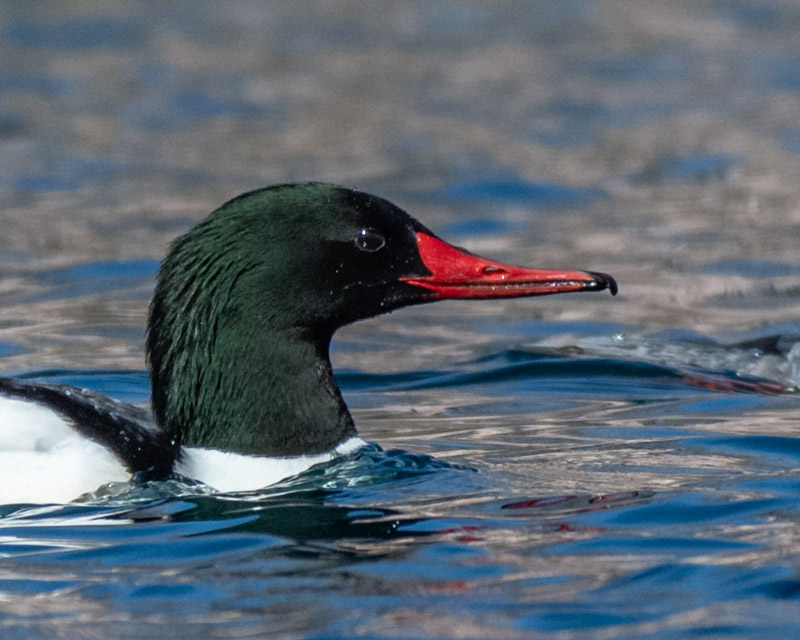
Mergansers are diving ducks and this female has just popped up from an underwater swim, beads of water glistening on her head.
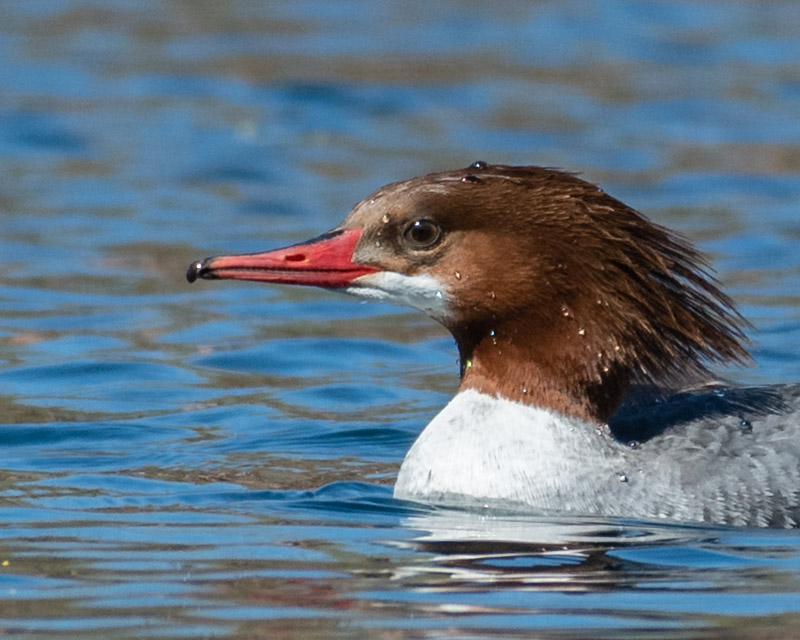
Next up: some ducks showing very different behaviors!
